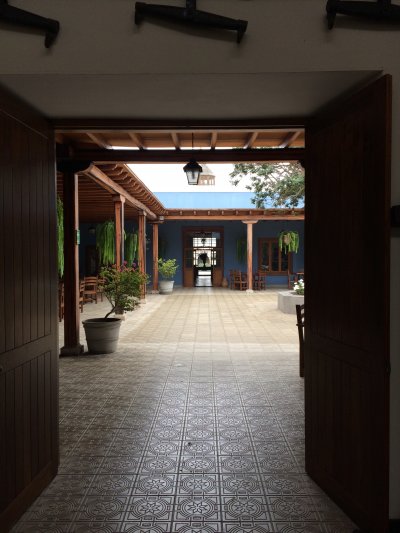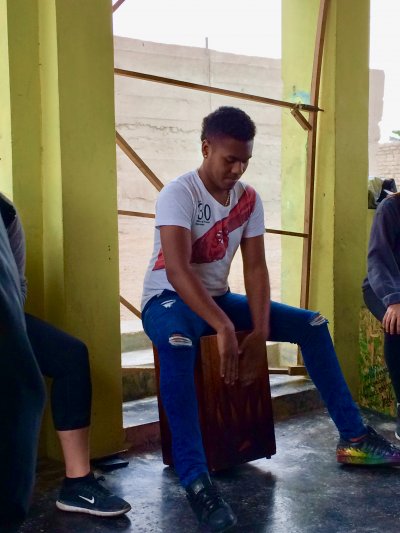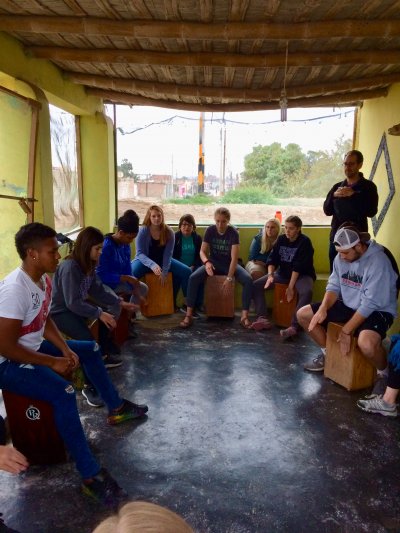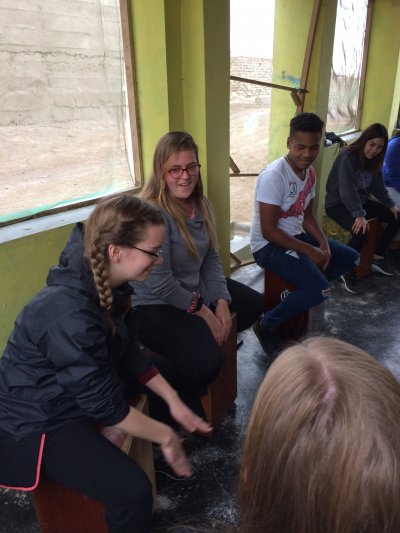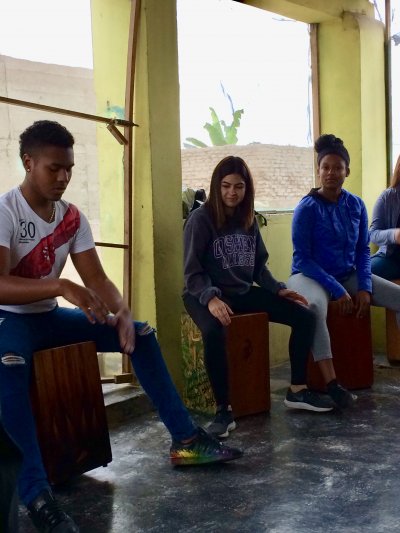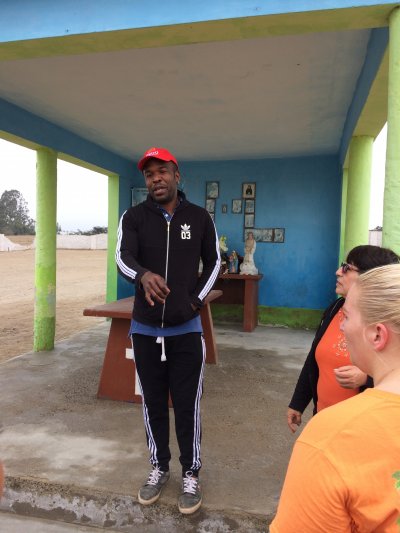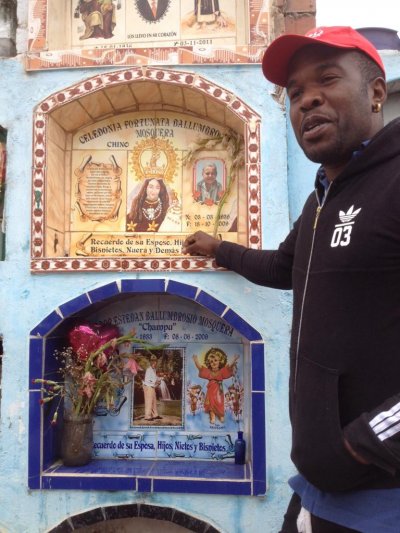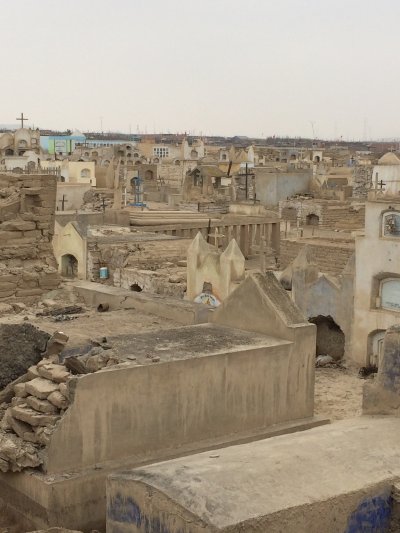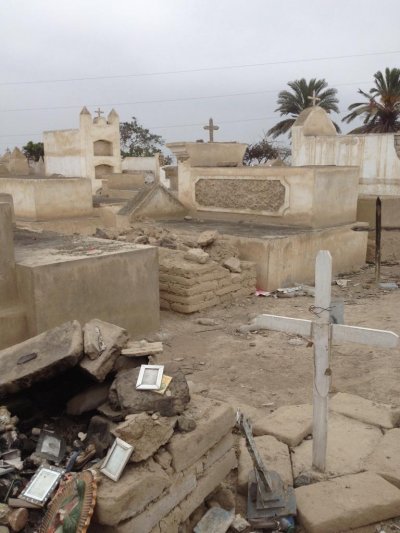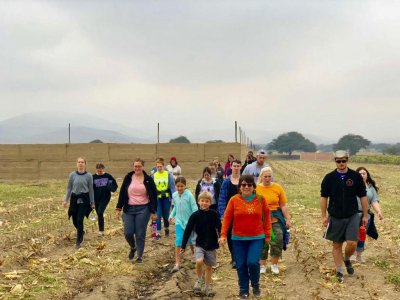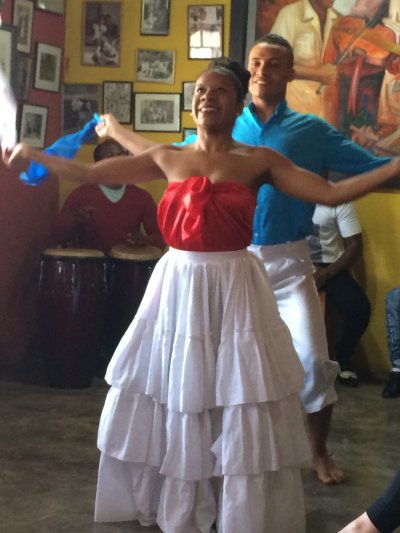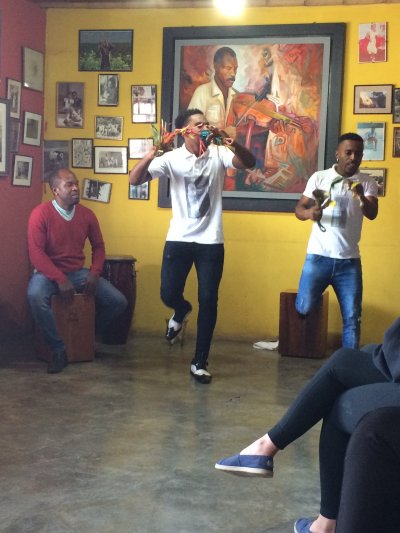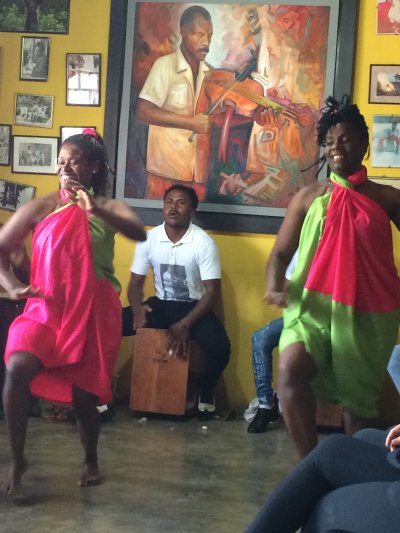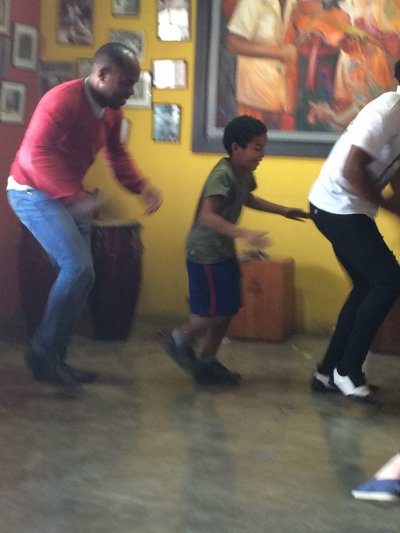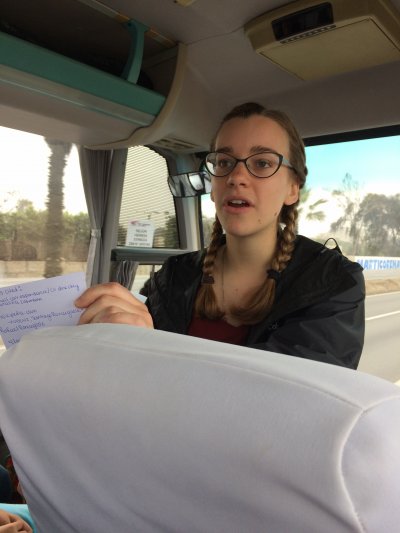Trip into the Heart of Afro-Peruvian Culture
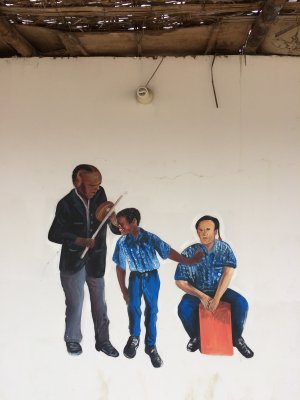
On Thursday, we traveled four hours south of Lima, to the region of Chincha, to visit the small town of El Carmen. El Carmen is home to the iconic Ballumbrosio family – a family at the heart of Afro-Peruvian music and culture. We were warmly hosted by the Ballumbrosios, who provided us with food, lodging, drumming lessons, and insight into the history of African descendants in Perú.
Before arriving in El Carmen, we stopped for a tour of Hacienda San Jose, located about 15 minutes away. This massive and opulent hacienda was a functioning slave plantation run by the Jesuit order beginning in 1688. It was later gifted by the King of Spain to a single family which held the plantation for several generations. At one point, over 1000 slaves worked on the plantation growing sugar cane and cotton, a crop which is still grown in the fields around El Carmen. The hacienda was beautiful from above, but down below, catacombs, punishment chambers and slave tunnels told a disturbing story of the appalling treatment of slaves on these plantations.
Once we arrived in El Carmen, we were treated to lunch in the Ballumbrosio family’s home. We had a chance to eat one of the signature dishes of Afro-Peruvian cuisine — sopa seca con carapulcra, a peppery stew of potatoes, peanuts and pork served over spiced noodles. Following lunch, we had a workshop on the cajón — one of the main instruments in Afro-Peruvian music. The cajón is a box-like percussion instrument that is played while seated on the box. We made a circle of 20 cajones on the porch, and attempted to learn three of the basic rhythms of Afro-Peruvian music. These rhythms were very challenging, and we played them at a snail’s pace, but we had a great time using our hands to create music together. Afterward, we walked to the central plaza of El Carmen, and our cajón instructor, Jean-Paul Palma, told us more about the ways that Afro-Peruvian music is used in the life of the town. He gave us a brief demonstation of Zapateo, one of the most famous Afro-Peruvian dances. With some elements similar to tap dancing, Zapateo has a complex pattern of footwork which uses the feet to create percussion.
The next day, Miguel Ballumbrosio took us for a walk through El Carmen. He led us up to a hill on the outskirts of town to see the cemetery where his ancestors are buried. He also told us stories of growing up on El Carmen and the ways that elements of traditional African beliefs are now blended into their strong Catholic faith.
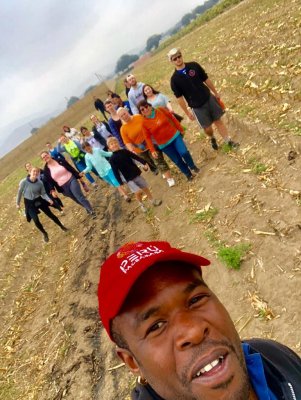
After returning to town, we were able to see all these pieces of music, dance and Afro-Peruvian culture come together in a living room performance by the Ballumbrosio family and friends. We got to see Zapateo, along with several other forms of traditional dancing that the Ballumbrosios have worked hard to preserve for their community over the last 50 years. We could even pick out some of the rhythms we had learned the day before in our cajón workshop. At the end, they invited us to stand up and try some dance moves. The festive mood was so contagious that everyone actually did!
